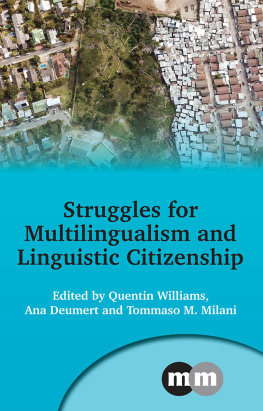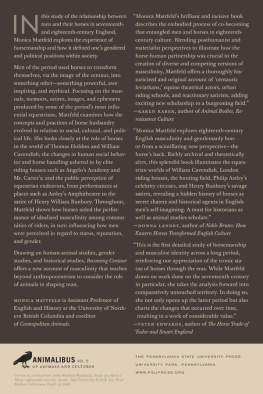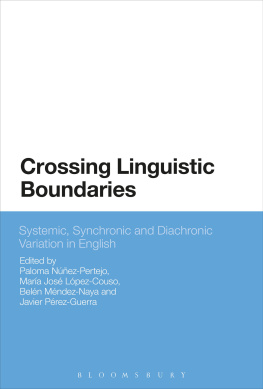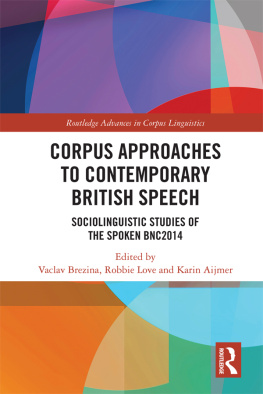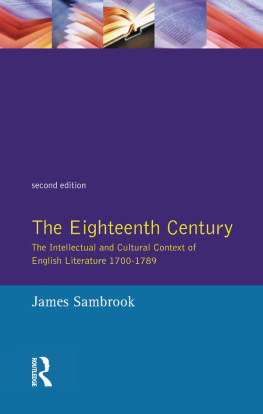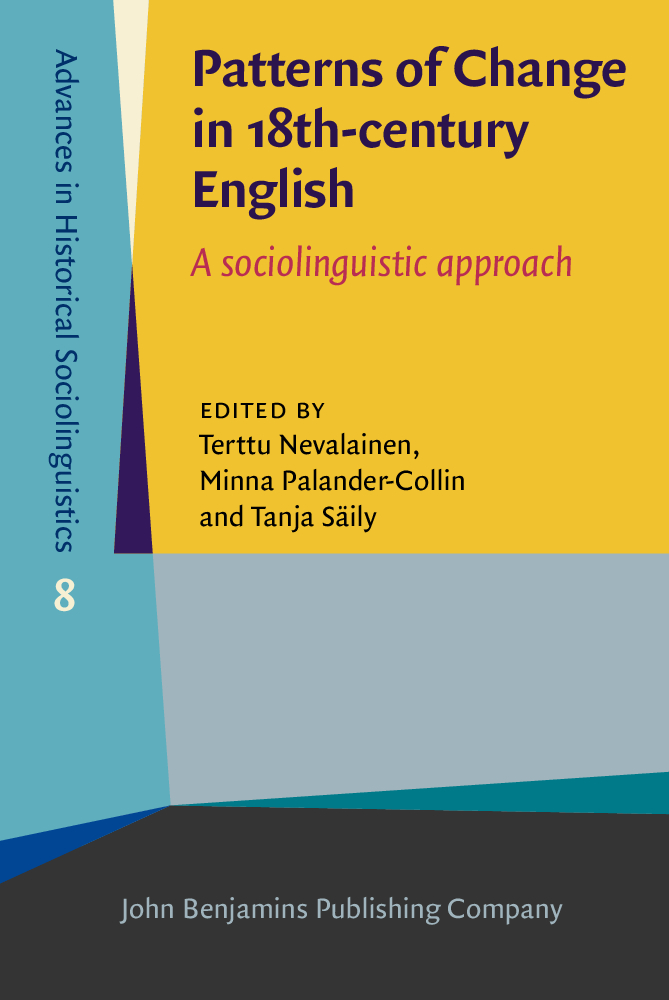

Terttu Nevalainen University of Helsinki Minna Palander-Collin University of Helsinki Tanja Sily University of Helsinki
doi: 10.1075/ahs.8
ISBN: (ebook)
John Benjamins Publishing Company https://benjamins.com
Preface and acknowledgments
The first concrete steps towards writing this book were taken in late 2008, when we drafted our preliminary research plan. Later on, we were fortunate to recruit Dr. Nuria Yez-Bouza to the project as a specialist in eighteenth-century grammar writing. A prolonged undertaking, the book has finally seen the light of day. The core chapters have largely turned out the way we envisaged they would, but our thinking about the broader context has been considerably enriched over the years. For example, the Google Books resource did not exist in 2008 and the third wave of sociolinguistics had just been mooted in a few publications. Overall, we hope that the book that we have produced is now more interesting and informative than it would have been had it appeared earlier.
During the years we have accumulated a debt of gratitude to many people. First, we would like to thank Nuria for her patience she was the only one of us who was always on time! Our gratitude to Professor Timo Honkela and Mr. Murtaza Hazara for advising us on bootstrapping and carrying out the tests, respectively. Professor Jukka Suomela produced the beanplots and accumulation curves, and Dr. Harri Siirtola designed the density plot in , Anna Suutarla and Ina Liukkonen helped us edit the final draft of the manuscript, and Lassi Saario finalized the subject index. We would also like to thank the staff of the John Benjamins Publishing Company and Anke de Looper, in particular, for their essential input into the publishing process.
We are grateful for the participant feedback we received at various conferences, including ICAME 34 at Santiago de Compostela in 2013 and HiSoN 2016 in Helsinki. We owe especial thanks to the two anonymous reviewers who made a number of valuable suggestions for improvement to the original manuscript, and to Marijke van der Wal for her careful editorial attention to both form and substance. This feedback helped us correct many errors and oversights and, we hope, make our take on historical sociolinguistics more accessible to the research community. We are only sorry we could not come up with a more interesting title encapsulated in a quote as one of the reviewers suggested. As an afterthought, it might perhaps have been: Slow but I believe perfectly honest? Sociolinguistic change in 18-century English.
This project would not have been possible without the Academy of Finland and University of Helsinki funding for the Research Unit for the Study of Variation, Contacts and Change in English (VARIENG; 20062011, 20122016, respectively), which benefited all of us and provided us with an active and inspiring research community. Other sources of funding have also in part supported our work, including project funding provided by the Academy of Finland and the Universities of Helsinki and Jyvskyl.
Helsinki, 20 December 2017
The Editors
Contributors
Mikko Hakala, MA, Department of Languages, University of Helsinki
Samuli Kaislaniemi, PhD, Department of Languages, University of Helsinki
Mikko Laitinen, Professor of English Language, Philosophical Faculty, University of Eastern Finland
Minna Nevala, Professor of English, Faculty of Communication Sciences, University of Tampere
Terttu Nevalainen, Professor of English Philology, Department of Languages, University of Helsinki
Arja Nurmi, University Lecturer, English, Faculty of Communication Sciences, University of Tampere
Minna Palander-Collin, Professor of English Language, Department of Languages, and Director, Helsinki Collegium for Advanced Studies, University of Helsinki
Tanja Sily, Post-doctoral Researcher, Department of Digital Humanities, University of Helsinki
Anni Sairio, University Lecturer, Department of Languages, University of Helsinki
Nuria Yez-Bouza, Lecturer in English Language, Department of English, French and German, University of Vigo
Part I Introduction and background
Chapter 1 Approaching change in 18th-century English Terttu Nevalainen
1.1 Preamble
Unravelling the diffusion of language change lies at the heart of historical linguistics. This challenge has traditionally been pitched at a highly abstract level in social terms:
To simplify our analysis, we shall assume that the language in process of evolution is that of a strictly monoglot community, perfectly homogeneous in the sense that observable differences represent successive stages of the same usage and not concurrent usages. (:164)
By contrast, sociolinguists, who approach language from the perspective of the community, know that change does not take place in social isolation: in reality there are always concurrent usages. Change implies choice. Changes crucially depend on the choices that language users make in adopting or rejecting a particular new form, function or construction in the first place. The outcome of these choices can be seen in language records of different kinds, in both speech and writing, but we cannot know how homogeneous these records are in social terms without taking into account their producers and production circumstances.
Ideally, both linguistic and social factors would therefore need to be accounted for in studies of the diffusion of language change. However, as is well known, the circumstances are rarely ideal for real-time studies of change, and limited access to data lies partly behind purely linguistic studies of long-term processes of linguistic change. But this does not always mean that long-term changes cannot be observed at a fairly close distance in social terms as well. That is our aim in this volume, where we analyse a variety of linguistic changes in their social contexts in the 18th century.
In past work, overviews of 18th-century English have been provided, for example, by
As appears from this summary account, the ground covered by these volumes varies greatly. For example, Beals undergraduate textbook ( presents individual research articles that focus on topics such as 18th-century prescriptivism, standardization, politeness, and dialect grammar.
Our book offers yet another perspective on 18th century English by presenting original research based on the same corpus of texts and a shared variationist sociolinguistic framework. One of its aims is to provide empirical and thematic continuity for the processes of change observed in the previous centuries (). However, reflecting the changing social circumstances, the potential role played by influences such as prescriptivism is also considered in discussions of the empirical findings.
As far as long-term, real-time language changes are concerned, a number of studies analyse 18th-century developments as part of grammatical change from Old or Middle English onwards (e.g., downtoning adverbs, , to mention only a few). Although studies on long-term language change may share a quantitative orientation, they are often informed by different grammatical approaches and have different aims.
As linguistic features and constructions vary in their frequency of occurrence, long-term diachronic studies need to take recourse to a variety of complementary but often discontinuous data sources, as is the case with the studies of individual grammatical changes listed above. Studies focusing on Late Modern English can benefit from large multi-genre and single-genre corpora, which enable the study of low-frequency elements in matching data sources. Among such multi-genre corpora,



